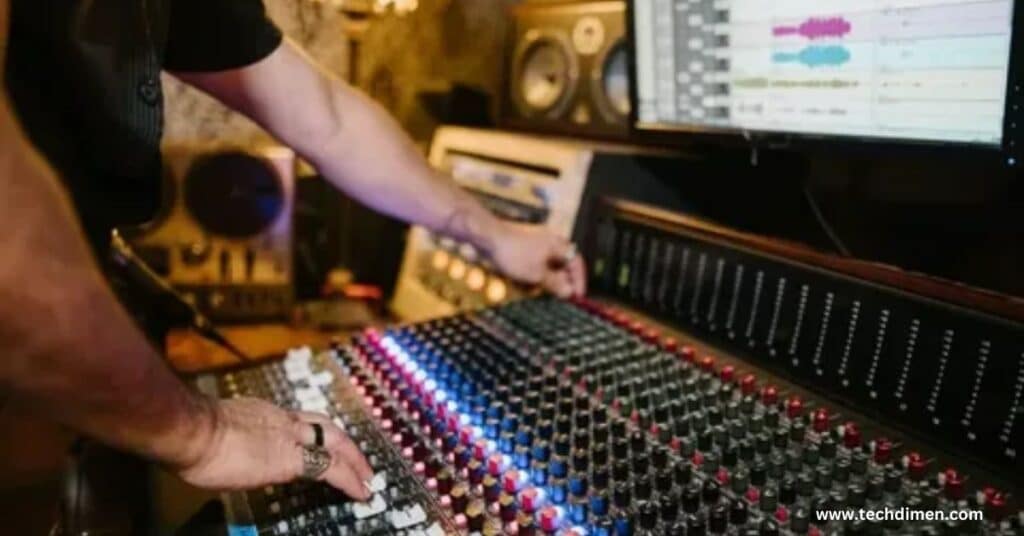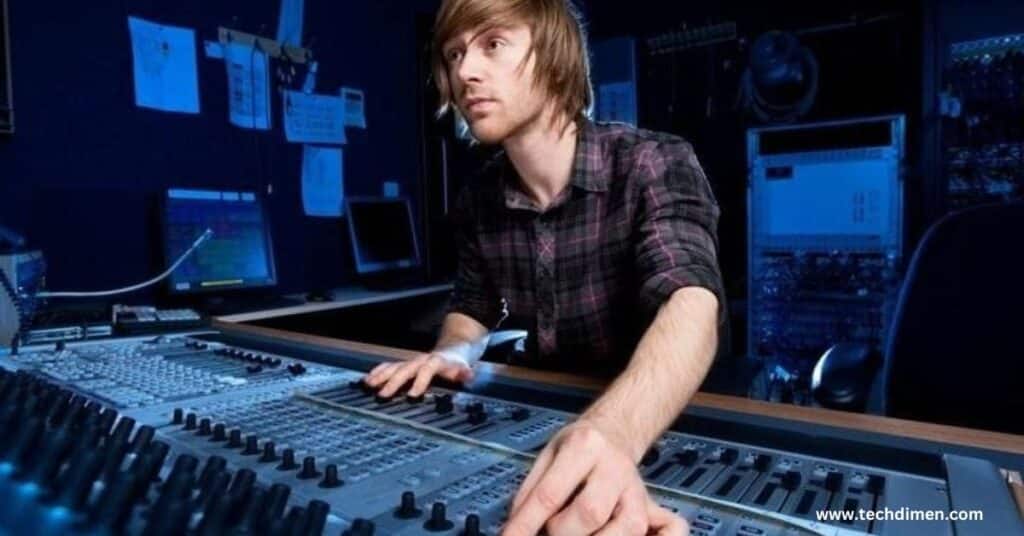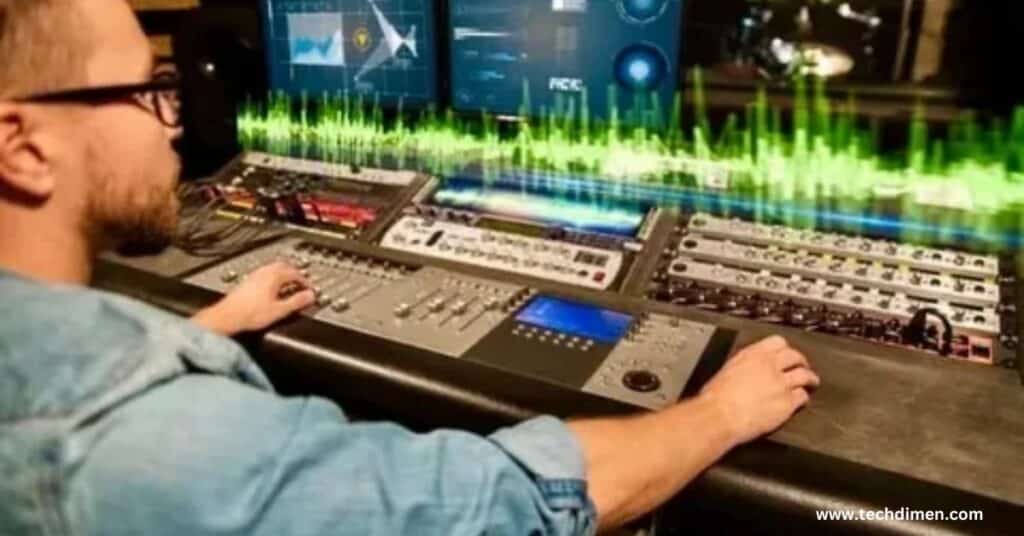Music creation has always been at the crossroads of art and technology. From analog tape machines to digital audio workstations, every evolution has brought creators closer to their vision. Today, a new chapter is being written. Its name music technology gross sound. This isn’t just another tool or plugin. It’s a full fledged music tech platform designed to transform the way musicians, producers, and engineers approach sound. In this guide, we’ll explore why Gross Sound is earning attention across the industry, how it differs from legacy tools, and what it means for the future of music technology.
music technology gross sound A New Generation of Music Tech Tools
Gross Sound is more than just software; it’s an ecosystem built around the needs of modern music creators. At its core, it combines intelligent AI driven tools with collaboration and cross platform compatibility. While traditional music production software like Logic Pro or Ableton Live has laid the groundwork, Gross Sound builds on top of that foundation with features that are smarter, faster, and more intuitive.
Launched in 2024, the platform has already seen adoption by thousands of users, from bedroom beatmakers to commercial studios. What sets it apart is its approach to simplicity without sacrificing power. Whether you’re designing synth layers or mixing a full orchestral arrangement, GrossSound streamlines the process while enhancing creative freedom.
Why music technology gross sound Resonates in the Digital Music Landscape

We’re living in a world where time, speed, and quality matter more than ever. Traditional digital audio workstations, while powerful, often present steep learning curves and require extensive hardware resources. GrossSound flips this script. It brings intelligent tools that adjust to your workflow rather than forcing you to adapt to theirs.
Its AI capabilities stand out most. Instead of sifting through dozens of plugins or presets, users receive intelligent suggestions tailored to their project. Whether you’re building a trap beat or mixing a cinematic score, the platform identifies tonal issues, frequency conflicts, and arrangement gaps instantly. This kind of smart support transforms both the speed and quality of the final product, especially for creators with limited engineering experience.
Inside music technology gross sound Core
At the heart of Gross Sound is a powerful AI engine trained on thousands of professional mixes, stems, and sound libraries. This model genre conventions and sonic standards, meaning it can help refine everything from your low end balance to stereo width with startling precision. For anyone who’s ever struggled with EQ settings or gain staging, this assistance is a game changer.
Beyond its AI, the platform supports seamless cloud based collaboration. Artists can work together from different parts of the world, with every change instantly synced and visible. This makes Gross Sound one of the few music creation tools that truly supports modern, remote workflows what many call this time music collaboration.
Another advantage is its compatibility. Gross Sound integrates easily with popular DAWs through VST and AU plugins, making it easy to introduce to an existing setup. If you’re already using FL Studio or Pro Tools, you don’t have to start from scratch. Instead, you can expand your toolkit with Gross Sound’s smart audio tools and music mixing solutions.
How Gross Sound Is Used by Artists, Engineers, and Producers

Gross Sound has found a home in multiple corners of the industry. Independent musicians often rely on it to master tracks without needing external engineers. Its smart mastering tools analyze your mix and apply final touches that meet commercial loudness and clarity standards.
For producers, especially those who manage multiple projects simultaneously, the platform’s speed and automation help shorten production cycles. You can jump from idea to finished track much faster. This is essential in today’s competitive landscape where releasing frequently can build and retain audiences.
Sound designers in the film and game industries also benefit from GrossSound. Its tools for generating and manipulating ambient textures, foley, and virtual instruments are advanced yet easy to use. The platform supports deep layer stacking, live previewing of effects, and even custom automation curves powered by AI suggestions.
How It Stacks Up Against Traditional Tools
When comparing GrossSound with legacy tools, several distinctions emerge. First, there’s the question of automation. Traditional DAWs require manual setup for virtually everything. GrossSound streamlines this with AI powered mix assistants and arrangement engines that can suggest transitions, adjust volumes, and enhance clarity with minimal input.
Then there’s accessibility. While most industry-standard software requires expensive licenses, GrossSound offers a more flexible model, including a freemium tier for beginners. This approach lowers the barrier to entry for aspiring musicians who may not have the resources to invest in a full studio setup.
Another major difference is collaboration. With traditional tools, working remotely requires bouncing stems, sharing large files, and often dealing with version control headaches. GrossSound offers live editing, session history, and cloud based autosave. This not only simplifies the process but also enhances creativity by enabling spontaneous collaboration.
music technology gross sound Overview
| Item | Details |
|---|---|
| Name | GrossSound |
| Type | AI powered music production platform |
| Users | Producers, DJs, composers, indie artists |
| Key Features | AI sound design, cloud collaboration, DAW integration, smart mastering |
| Platforms | Windows, macOS, Web |
| Works With | Ableton, FL Studio, Logic Pro, Pro Tools |
| Strengths | Fast workflow, AI tools, remote collab, plugin support |
| Uses | Beat-making, scoring, podcasting, live sets |
| Plans | Free, Pro, Enterprise |
A Look Under the Hood Technology Powering the Platform
GrossSound’s technical architecture is impressive. The AI engine relies on deep learning models that understand tonal balance, harmonic structure, and temporal dynamics. By analyzing waveform data and MIDI structure in real time, the system can recommend changes that align with your creative intent.
The platform also uses advanced digital signal processing algorithms, optimized for speed and accuracy. These algorithms support effects with low latency, ensuring smooth playback even during intensive sessions. Security and privacy are handled with encrypted cloud storage, which means your projects are always backed up and safe from data loss.
Creative Stories from the Studio

One Los Angeles based electronic music producer reported a 50% decrease in average project time after switching to Gross Sound. They praised the platform’s ability to quickly analyze mixdowns and highlight phase issues and frequency overlaps, tasks that previously consumed hours.
In another case, a singer songwriter in Berlin created and released an entire EP using only Gross Sound’s mobile and desktop tools. She was able to write, arrange, mix, and master from a single interface, and reported significant savings in time and cost compared to her earlier projects produced in traditional studios.
A sound designer working on a mobile game shared their experience using music technology grosssound to build environmental loops. They highlighted the platform’s ability to auto match levels across layers and its built in support for looping structures and dynamic pitch shifting.
Using Data to Improve Art Analytics in music technology gross sound

One of Gross Sound’s most unique features is its data dashboard. It offers insights into how your track’s audio dynamics compare to industry benchmarks. Users can see average LUFS levels, frequency spread graphs, and even compression ratios over time. These metrics help inform better decisions, especially when preparing tracks for streaming platforms that have strict loudness and normalization standards.
The platform also allows split testing. Artists can upload multiple versions of a mix and release them to sample audiences, collecting feedback and performance data before finalizing a master. It’s a level of testing rarely available to independent musicians until now.
How Much Does Gross Sound Cost A Closer Look at Pricing
Gross Sound offers three pricing levels designed to match different stages of a creator’s journey. The free version includes limited project storage, basic editing tools, and watermarking for exports. For $15 per month, users unlock the Pro version, which includes full DAW integration, access to AI features, and cloud syncing. The Studio plan, priced at $50 per month, provides team seats, unlimited project slots, and priority support. Educational discounts are also available, making this technology more accessible to students and learning institutions.
Industry Buzz: Reception and Future Roadmap
The response from the industry has been overwhelmingly positive. Several Grammy nominated producers have praised Gross Sound for its forward-thinking approach. Collaborations with hardware brands like Novation and plugin developers suggest deeper ecosystem integration in the near future.
Looking ahead, the team plans to roll out features like AI generated vocals, spatial audio formatting for immersive environments, and enhanced MIDI customization. A dedicated mobile app is also in development, aiming to bring full production capabilities to handheld devices.
FAQs
What Is music technology gross sound Production?
GrossSound is a bold, expressive approach to music production that leans into the raw and imperfect. Rather than cleaning up every sound, it highlights the beauty in distortion, grit, and noise. Think of it as the audio version of a weathered photograph full of texture and emotional weight. It’s not about sounding polished. It’s about sounding real.
Which Genres Are Embracing music technology gross sound?
GrossSound has found a home in several genres, and it’s growing rapidly in influence. Electronic music producers use it to break free from sterile, over-produced tracks. Indie pop artists lean on it to add emotional depth. In hip hop and trap, it creates a darker, grittier atmosphere. Even ambient and cinematic composers are turning to GrossSound to evoke stronger emotional reactions.
Does It Require Expensive Gear?
One of the most appealing aspects of GrossSound is that it’s accessible. You don’t need high end studio gear to create it. Many producers start with free or low-cost software and plugins. What really matters is your creativity and willingness to experiment. A smartphone recording of traffic or wind can become the perfect texture with the right treatment. In fact, some of the most compelling GrossSound tracks use lo fi equipment on purpose.
Can AI Help You Create Gross Sound Textures?
Absolutely. AI-driven tools are playing a growing role in music production, and GrossSound is no exception. Programs like LANDR and Endlesss can suggest ways to enhance textures, add vintage sounding crackles, or even remix parts of your song with rawer, noisier layers. These tools won’t replace your ear, but they can definitely expand your palette.
Where Can You Learn to Produce in the Gross Sound Style?
The internet is full of great resources for learning GrossSound techniques. YouTube is a fantastic place to start, with creators offering step by step breakdowns of gritty sound design workflows. Reddit forums such as r/WeAreTheMusicMakers and r/SoundDesign are lively spaces where producers share their methods and get feedback. For more structured learning, platforms like Skillshare, Coursera, and Point Blank Music School offer courses that touch on experimental and lo-fi production techniques.
Is Gross Sound Just a Trend?
It might seem like a fad, especially with how quickly it’s been adopted by bedroom producers and experimental musicians. But GrossSound taps into something deeper: a desire for authenticity in a world that often feels overproduced. As immersive technologies like spatial audio, VR, and AR become more common, the need for audio that feels raw and tangible is growing. In that sense, GrossSound isn’t just trendy it’s likely to be a lasting part of music’s future.
Is Gross Sound Beginner Friendly?
Definitely. In fact, it’s one of the most welcoming styles for newcomers. Because it thrives on imperfection, you don’t need to be a seasoned mixing engineer to get started. You can play around with distortion, pitch shifting, reversing samples, or layering found sounds to discover your own signature. The process is more exploratory than technical, which makes it both fun and rewarding.
How Do You Start Creating Gross Sound Tracks?
You can start by taking a basic sound a synth chord, a drum loop, or even your voice and applying effects that degrade it. Distortion, tape emulation, glitch effects, and creative are all great entry points. Then try layering in unconventional sounds like city noise, vinyl crackle, or static. Experimentation is key. The goal is to create something that feels alive and emotionally resonant, even if it’s a little rough around the edges.
Are There Communities Built Around This Style?
Yes, and they’re thriving. From subreddits like r/Synthesizers and Hip Hop to Discord servers for experimental producers, there are plenty of spaces where creators share samples, trade ideas, and give each other feedback. You’ll also find active comment sections on YouTube channels focused on lo fi, glitch, and ambient production where passionate communities discuss their techniques.
What’s the Core Philosophy Behind Gross Sound?
At its heart, GrossSound is about emotional honesty. It rejects the sterile, overly polished sound of mainstream production and embraces the messy, unpredictable nature of real life. Whether you’re layering textures that sound like breaking glass or distorting a vocal until it feels haunted, you’re telling a story that feels personal and unfiltered. That’s what makes GrossSound not just a technique, but a movement.
Conclusion
The rise of Gross Sound marks a shift in how we think about music creation. It brings together smart audio tools, this time collaboration, and professional grade analytics into a single intuitive platform. Whether you’re a seasoned producer or just starting out, it offers a smoother, faster, and more creative path to making music.
With AI music software, streamlined interfaces, and a focus on accessibility, Gross Sound is clearly poised to become the new standard in music production. It doesn’t replace your current tools it enhances them. For anyone curious about the best music software for producers or simply looking for innovative tools for music creators, Gross Sound delivers answers in spades.

Jhon AJS is a tech enthusiast and author at Tech Dimen, where he explores the latest trends in technology and TV dimensions. With a passion for simplifying complex topics, Jhon aims to make tech accessible and engaging for readers of all levels.







